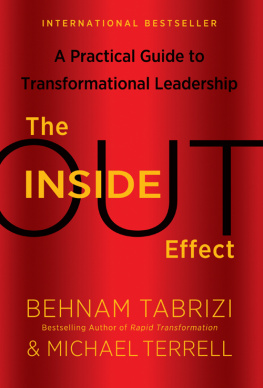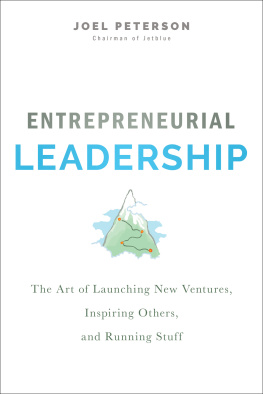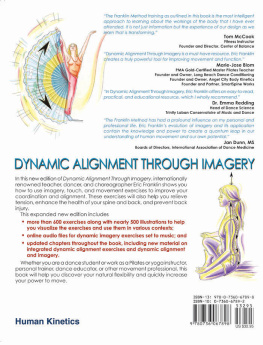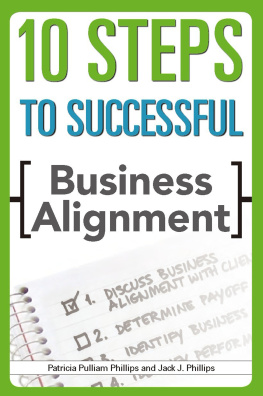Introduction
H ave you ever felt like you were on a roll? Everything seems to be going your way. Time slows, and you see clearly. Past the noise and distractions, youre able to zoom in on the essential. You take the perfect action at the perfect time, like Neo effortlessly dodging bullets in The Matrix. You instinctively know what to do, and you have the profound feeling that you are on the right path. Perhaps you have even experienced what many athletes describe as being in the flow or in the zone. Surfers catch the perfect wave, and skiers effortlessly navigate challenging slaloms. That state of consciousness where we feel in the groove and perform at the optimal level is not the prerogative of a chosen few but is available to everyone.
This experience is the manifestation of what I call alignment. Alignment is the congruence of who you are, what you feel, and what you love on a deep and fundamental level with what you do, what you say, what you envision, and where you are going. Alignment is not about falling in step or conforming to others expectations, but rather its about becoming more yourselfand, in so doing, transcending what you thought were the limits of your capabilities.
Think of your spine. When all your vertebrae are working as they should, stacked in perfect position on top of each other and flexing across their full range of motion without constriction, that alignment benefits your entire body via the multitude of nerves connected to them. Any constriction or blockage in any part of your spine, on the other hand, and the chain reaction works in the other direction: your body experiences pain, friction, a narrower range of movement, or lower energy. In short, it operates below its potential.
I experienced alignment firsthand as a teenager when I was a competitive show jumper: the perfect communion with my horse, the clear vision of how to navigate the obstacle course, and the laser focus on what needs to be donefree of the noise of thoughts and doubts. I felt seamless communication with the horse through hands and legs, using anticipation, intuitive agility, and subtle adjustments to stay in perfect balanceproducing a sense of ease, clarity, calmness, and effortless power. I became one with my horse, and together we became one with the whole, transcending limitations.
I come from a family with a long tradition of horse breeding and competitive jumping, and horsemanship has been running in our blood for generations. I was riding horses by the time I was four years old and competing by age ten. It is therefore hardly surprising that I learned a lot about alignment from horseback ridingand that equestrian examples run through these pages. I later applied these lessons to a corporate career in marketing and communication, and again when I created a business in the steel recycling industry. Those experiences and what I learned through them have coalesced into leadership coaching and public speaking, and today I help top executives and entrepreneurs become even better at what they do by findingand maintainingtheir alignment. Time and again, I witness how they are then able to step up their performance with ease and joy and successfully embrace new challenges. Their sense of alignment facilitates the agility, speed, and foresight that are essential to navigate increasingly complex environments, rapid change, and uncertainty. By fully becoming the leaders they are meant to be, they are more influential and broaden their reach as well as their impact, leaping from successful to extraordinary.
The leader in you is no different. You too, if properly aligned, can reach higher than you ever thought possible, effortlessly and joyfully inspiring others to embrace and follow your vision. You too can generate that sense of clarity and ease, even in the face of challenges and setbacks. You too can create that congruence of who you are, what you think, and what you do.
Alignment does not happen by itself, however. It requires a willingness to connect with who you truly are, to do the work to become who you want to be, and to project your aligned self from your inner world onto the outside one. It requires the courage to disrupt your own status quo. It requires the right tools and guidance to bust through your self-limitations.
How do you generate that sense of alignment? That is what this book is about. It is a manual to get you started. What lies in these pages has emerged from my own experience and from coaching dozens of leaders from a variety of industries over the years, greatly enriched by my participation in the Marshall Goldsmiths 100 Coaches project. The MG100, as it is known, is the extraordinary group gathered by the number-one New York Times bestselling author of Triggers, MOJO , and What Got You Here Wont Get You There, Marshall Goldsmith to pay it forward and teach everything he knows for free, provided the participants teach others themselves. I have been immensely privileged to be part of that journey, which has helped me refine my thinking on alignment. This book focuses on leadership in a broad sensewhether you are the CEO of a multinational or of your own life.
At the core of this book and of my work as a coach is the human dimension of leadership: alignment deals with emotional intelligence in service of your relationship with both yourself and others. This book rests on the concept of the leader as a coach-in-chief who steers a ship with influence. This concept has been written about extensively, and my purpose here is to build on it by illustrating how it connects with alignment. This book is also built on the premise that organizations are made of the hearts and minds of the many people who orbit within their area of influence, from employees to suppliers, customers, and local communities.
Part I is about connecting with yourselfidentifying your purpose, your values, and what self-limitations might be standing in your wayto delineate and highlight your alignment gap. Part II offers tools to narrow that gap and better align yourself with the purpose and values youve identified, while busting your self-limitations. Part III focuses on how to project your new inner alignment outward to facilitate the collective alignment of people around you, boosting your influence and impact as a leader. Finally, the conclusion brings it all together and offers a practice of daily questions to help you stayor get backon track. Chapters build upon each other in sequence, but each also stands alone for the browsers among you who would rather dip in and out of this book.
Are you ready for the journey towards authentic and aligned leadership? If so, read on!
1
Mind the Gap
T here are two kinds of equestrians: those who seek to impose their will onto their horse, muscling their way forward and pulling on the reins; and those who seek to work in harmony and alignment with their horse, cultivating mutual trust, ease, and communication. Both can be successful. The first, however, is more likely to hit a ceiling. Why? Because imposing your will requires force and therefore far more energy, both of which go only so far. It triggers friction if not outright resistance, and equestrians who rely on it are likely to get either outwilled or outweighed by their 1,300-pound horse. The second kind of rider, on the other hand, is in a much better position to keep stretching the boundaries of their potentialas well as their horses. When working in authentic harmony, force is no longer necessary: instead of resisting, the horse gives more and responds better and more quickly to the rider. These equestrians and their horses become far nimbler, able to adjust their course of action when necessary, refine their skills, and ultimately leap farther, all while experiencing the highs of alignment.







